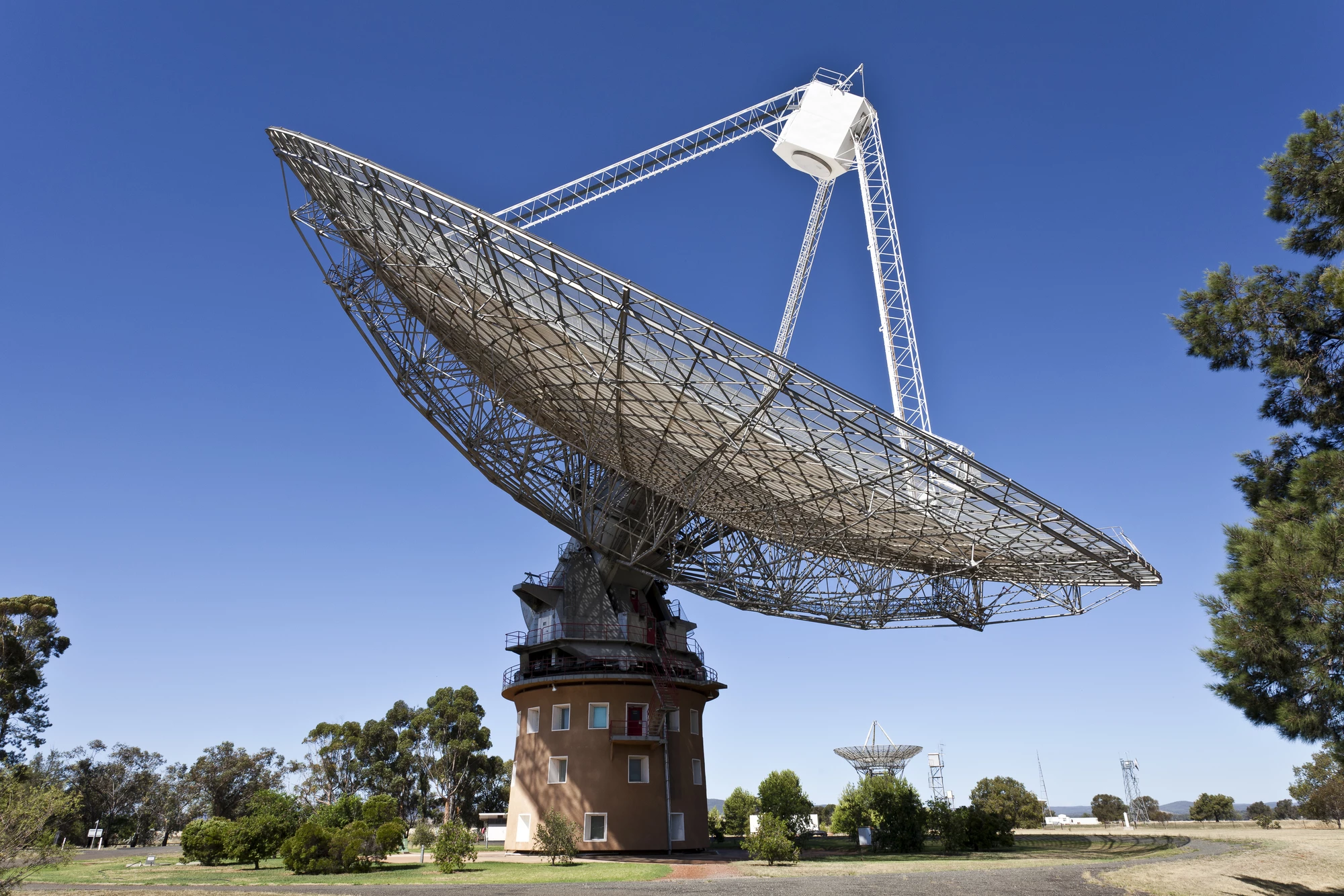Researchers have developed a new technique to better detect extraterrestrial radio signals by weeding out the interference caused by Earth-based devices. It’s hoped that the technique will lead to the discovery of the first evidence of life outside our planet.
The Search for Extraterrestrial Intelligence (SETI) aims to detect evidence of technological civilizations – technosignatures – elsewhere in the universe. Radio frequencies, out of the whole electromagnetic spectrum, are a good candidate for picking up technosignatures. Since the first dedicated radio search for technosignatures in 1961, SETI experiments have expanded greatly to cover larger frequency bandwidths, higher resolutions, and additional signal types.
The Breakthrough Listen (BL) project based at the University of California, Berkeley, is the most comprehensive SETI search program to date, observing space using large bandwidths at facilities including the Green Bank Telescope (GBT) in West Virginia and the Parkes Murriyang Telescope in New South Wales.
The problem with using Earth-based radio telescopes is that they’re prone to ground and satellite radio interference. Cellphones, microwaves, car engines and SpaceX’s Starlink satellites can all produce blips that mimic a technosignature, giving off a false alarm. Now, researchers from the University of California, Berkeley, have developed a new technique for reducing this type of interference.
“I think it’s one of the biggest advances in radio SETI in a long time,” said Andrew Siemion, one of the study’s co-authors. “It’s the first time where we have a technique that, if we just have one signal, potentially could allow us to intrinsically differentiate it from radio frequency interference. That’s pretty amazing, because if you consider something like the Wow! signal, these are often a one-off.”
The Wow! signal was a strong 72-second signal picked up by Ohio State University’s Big Ear Radio Telescope in 1977. It’s so named because when astronomer Jerry Ehman spotted it on a computer printout days later, he scrawled “Wow!” in red pen across the page. While the signal’s origin has been speculated but not yet identified, the Wow! signal remains the strongest candidate for an ET radio transmission ever detected. It has not been observed since.
“The first ET detection may very well be a one-off, where we only see one signal,” said Siemion. “And if a signal doesn’t repeat, there’s not a lot we can say about that. And obviously, the most likely explanation for it is radio frequency interference, as is the most likely explanation for the Wow! signal. Having this new technique and the instrumentation capable of recording data at sufficient fidelity such that you could see the effect of the interstellar medium, or ISM, is incredibly powerful.”
Natural cosmic sources of radio waves produce a broad range of wavelengths, or broadband radio waves. In contrast, technological civilizations, such as ours, produce narrowband signals. Think of it like the difference between radio static and a tuned-in radio station. So far, no narrowband radio signals originating outside our solar system have been confirmed. Picked up by the Parkes Telescope in 2019, the radio signal dubbed BLC1 (Breakthrough Listen Candidate 1) was initially thought to be a narrowband signal originating from the Proxima Centauri system but, it turned out, was likely caused by interference from human tech.
The UC Berkeley researchers realized that since narrowband signals have to travel to Earth through interstellar space, they should exhibit observable features that would distinguish them from Earth-based signals. Past research has shown that cold plasma in the interstellar medium (ISM) affects radio signals from sources such as pulsars, causing them to rise and fall in amplitude – scintillate – over time. Earth’s atmosphere produces a similar scintillation; it’s what makes the point of optical light from stars twinkle. Planets, which are not point sources of light, don’t twinkle.
So, they developed a computer algorithm that analyzes the scintillation of narrowband signals, focusing on those that dim and brighten over periods of less than a minute, indicating that they’ve passed through the ISM.
The researchers are testing their new technique using the GBT in West Virginia, hoping to weed out technosignatures from Earth-based radio signals.
“Maybe we can identify this effect within individual observations and see that attenuation and brightening and actually say that the signal is undergoing that effect,” said Bryan Brzycki, lead author of the study. “It’s another tool that we have available now.”
The novel technique will only be useful for signals originating more than about 10,000 light years from Earth since a signal needs to travel through enough ISM to show detectable scintillation.
The researchers say that, in future, incorporating machine learning into their search technique might assist in identifying narrowband sources of scintillation by filtering out broadband emissions.
The study was published in The Astrophysical Journal.
Source: UC Berkeley





